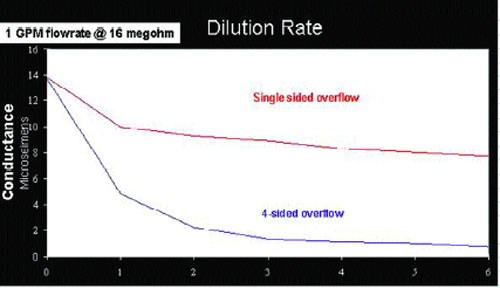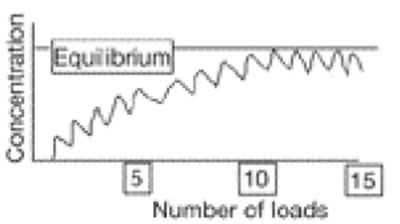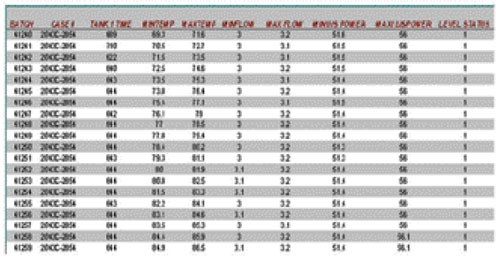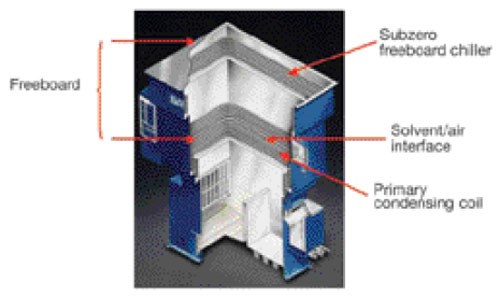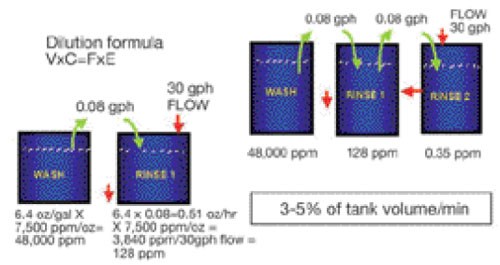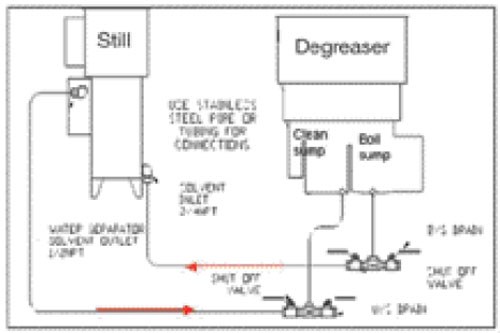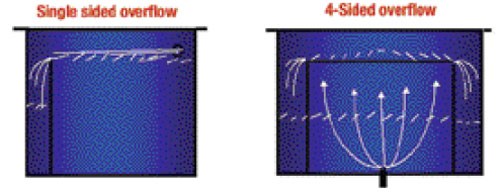Published
Four Steps to Developing a Robust Verifiable Cleaning Process
The key to cleaning success lies in making the right process and equipment selections anddocumenting the process for each component cleaned.
Jon Harman
The key to cleaning success lies in a four step process that includes: (1) selecting a process that cleans your parts in the laboratory; (2) selecting production equipment that reproduces the lab process; (3) ensuring the production process and equipment is stable and robust; and (4) documenting the process for each component cleaned. Investing in training and maintenance is the final—but important—part of the process.
• The soil
• A company preference
• Local environmental regulations
• Throughput requirements
In addition to these factors, determine the benefits of cleaning an appropriate number of parts in a lab or pilot plant, using the recommended process with various cycle times to determine the process sensitivity, and evaluating the part cleanliness to determine effectiveness and robustness of process.
Manual processes used in the lab must be scalable; for example, hand-held air blow-off and spray wash/rinse. Throughput requirements cover how many different types of components will be needed, how many components of each type, hours of operation, how many different processes will be used and in what order, the number of baskets per hour for each process and the capacity of each fixture. Fixture design includes sturdy construction that will not damage components, lowest possible weight and good drainage.
Solution cleaning efficacy is maintained through:
1. Turbitity and Refractive index
• A measure of the lack of clarity of the solution
• Online or offline
• Requires standards to compare
• Does not discriminate between different soils
2. pH
• Online or offline
• Most alkaline detergents contain buffers for pH
• pH does not change until after the detergent stops cleaning (see Figure 3)
3. Solution change out
• Measure component cleanliness over time and plot
• Determine the number of baskets processed before the cleanliness starts to degrade
• Change the cleaning solution at 80 percent of this number
• Change at a convenient pm time
• Chemical cost less than $100
Particulate contamination can be filtered to a smaller size than you measure. It uses differential pressure to monitor filter life, flow is 10 to 20 percent tank volume/minute. Using different sized filters in series when filtering a wide range of particle sizes, its four-sided overflow tank design reduces recontamination (see Figure 4).
Comparing evaporator versus disposal, it is 2.5 KW to evaporate one gallon of water at $0.15 KW/hour energy cost and $10/gallon disposal cost. An evaporator costs $15,000 to $20,000. If you evaporate 30 gallons/week an evaporator has a two-year payback
1. Concentration of dirt that is dragged into rinse (C)
• 1 ounce/gallon = 7,500 PPM
2. Volume of dragout (V)
3. Flow rate of rinse water (F)
4. Rinse tank equilibrium concentration (E)
• The maximum acceptable contamination ( see Figure 7)
5. Water flow rate
• Dilution formula: V x C = F X E (see Figure 8)
6. Tank design (see Figure 9 and 10)
Major sources of working losses are dragout, spray cleaning and lack of automation. Solvent dragout can result from fixturing, rotation and superheated vapor drying. Fixturing must be designed to eliminate the trapping of solvent by the fixture or parts. Rotation eliminates trapping of solvent. During superheated vapor drying, raise temperature of vapors above solvent boiling temperature and evaporate solvent residues by removing solvent residue from parts with large surface areas and holes or pockets (see Figure 12). Superheated vapors can be implemented by peripheral coil, in-line heat exchanger, combined in-line and peripheral coil and hot plate (see Figure 13).
Spray cleaning increases losses 3X even though a solid stream spray is better than a fine spray. However, a closed cover does not substantially reduce losses. Lack of automation can also affect your process. NESHAP regulations as well as many state and local regulations require automation with a maximum entry and exit speed of 10 FPM. These changes can increase vapor rinse from 10 to 180 seconds and can reduce emissions one to two gallons per month.
1. Select a process that cleans in the lab
2. Select product equipment that reproduces the lab process
3. Ensure production process and equipment is robust
4. Document process for each component cleaned
Also don’t forget to invest in training and maintenance. All these key points will help you and your company find the road to success!
Jonathan Harman is Vice President and General Manager of the Worldwide Precision Cleaning Group for Branson Ultrasonics in Danbury, CT. Jon has 25 years of experience in the cleaning industrial in various sales, marketing and management positions. He has a B.S. in chemical engineering and an M.B.A.
Step 1: Selection of the Cleaning Process
When you are ready to select the process and chemistry, consider requirements such as:• The soil
• A company preference
• Local environmental regulations
• Throughput requirements
In addition to these factors, determine the benefits of cleaning an appropriate number of parts in a lab or pilot plant, using the recommended process with various cycle times to determine the process sensitivity, and evaluating the part cleanliness to determine effectiveness and robustness of process.
Step 2: Selection of Production Equipment
Characteristics of production equipment should top your list of requirements. Your systems must consistently reproduce lab processes, meet throughput requirements, manage all of the process fluids and soils, be easy to service and maintain, and components must be fixtured to reduce dragout and damage. If your equipment consistently reproduces lab results, work with a reputable machine builder to scale up. Additional process steps may be required to handle the soils loading from production quantities. Fixturing issues that should be addressed immediately are throughput, cleaning, rinsing and drying.Manual processes used in the lab must be scalable; for example, hand-held air blow-off and spray wash/rinse. Throughput requirements cover how many different types of components will be needed, how many components of each type, hours of operation, how many different processes will be used and in what order, the number of baskets per hour for each process and the capacity of each fixture. Fixture design includes sturdy construction that will not damage components, lowest possible weight and good drainage.
Managing Aqueous Process Fluids Wash
In order to manage process fluids, consider both aqueous and solvent solutions. Aqueous is a wash and rinse solution featuring ventilated air, most effective on particulates and soil, while solvent wash solutions work well on emissions, soil, particulates and dragout. It also maintains liquid level, removes oil and grease, maintains solution cleaning efficacy, and manages particulate contamination. Figure 1 illustrates maintaining liquid level chemistry reservoir with metering pump. Figure 2 shows maintaining liquid level chemistry reservoir with metering pump removing grease and oil, working as an oil coalescer.Solution cleaning efficacy is maintained through:
1. Turbitity and Refractive index
• A measure of the lack of clarity of the solution
• Online or offline
• Requires standards to compare
• Does not discriminate between different soils
2. pH
• Online or offline
• Most alkaline detergents contain buffers for pH
• pH does not change until after the detergent stops cleaning (see Figure 3)
3. Solution change out
• Measure component cleanliness over time and plot
• Determine the number of baskets processed before the cleanliness starts to degrade
• Change the cleaning solution at 80 percent of this number
• Change at a convenient pm time
• Chemical cost less than $100
Particulate contamination can be filtered to a smaller size than you measure. It uses differential pressure to monitor filter life, flow is 10 to 20 percent tank volume/minute. Using different sized filters in series when filtering a wide range of particle sizes, its four-sided overflow tank design reduces recontamination (see Figure 4).
Comparing evaporator versus disposal, it is 2.5 KW to evaporate one gallon of water at $0.15 KW/hour energy cost and $10/gallon disposal cost. An evaporator costs $15,000 to $20,000. If you evaporate 30 gallons/week an evaporator has a two-year payback
Rinse
During the rinse process, one must consider the water quality, water flow and tank design. Water quality scale should be 4 K ohms = 125 PPM to be good quality tap water while 18 M ohms = 0.02 PPM is high quality DI water (see Figure 5).Water is often the largest component of operating cost. Therefore, a counter cascade water flow is most efficient (see Figure 6). You should also filter rinses for increased effectiveness. Rinsing is a dilution process. The key elements that impact rinsing are:1. Concentration of dirt that is dragged into rinse (C)
• 1 ounce/gallon = 7,500 PPM
2. Volume of dragout (V)
3. Flow rate of rinse water (F)
4. Rinse tank equilibrium concentration (E)
• The maximum acceptable contamination ( see Figure 7)
5. Water flow rate
• Dilution formula: V x C = F X E (see Figure 8)
6. Tank design (see Figure 9 and 10)
Ventilation
One can control solution vapors by conventional lip vent vs. face vent in turn baskets fumes’ chemistry during transfer to rinse and chemistry and first rinse tank. ACGIH guidelines call for a 2000 fpm slot velocity and 20"X24" tank requiring 1400 scfm.Managing Solvent Process Fluids
Emissions
Emissions losses include idling, shut down, maintenance and working losses. Idling losses are the result of solvent/air interface size, freeboard height, design of cooling, design of plumbing or cover design (see Figure 11). Typical idling losses are 0.005 to 0.05 lbs/hr/ft2. Shutdown losses result from solvent/air interface size (smaller is better), solvent and air cooling, design of plumbing (welded is best) and cover design (sliding is best). Typical shutdown losses are 0.002 to 0.01 lbs/hr/ft2. Maintenance losses involve filter design (bag filter is best), plumbing design (welded is best) and fill/drain design (automatic is best). Typical maintenance losses are 0.1 to 1.0 lbs/ft2/day. Finally, working losses are affected by basket size, throughput, part configuration, fixturing and the process used. Typical working losses are 0.05 1.0 lbs/hr/ft2. Maintenance and working losses represent 80 to 90 percent of emissions.Major sources of working losses are dragout, spray cleaning and lack of automation. Solvent dragout can result from fixturing, rotation and superheated vapor drying. Fixturing must be designed to eliminate the trapping of solvent by the fixture or parts. Rotation eliminates trapping of solvent. During superheated vapor drying, raise temperature of vapors above solvent boiling temperature and evaporate solvent residues by removing solvent residue from parts with large surface areas and holes or pockets (see Figure 12). Superheated vapors can be implemented by peripheral coil, in-line heat exchanger, combined in-line and peripheral coil and hot plate (see Figure 13).
Spray cleaning increases losses 3X even though a solid stream spray is better than a fine spray. However, a closed cover does not substantially reduce losses. Lack of automation can also affect your process. NESHAP regulations as well as many state and local regulations require automation with a maximum entry and exit speed of 10 FPM. These changes can increase vapor rinse from 10 to 180 seconds and can reduce emissions one to two gallons per month.
Soil
Soluble soils will concentrate in boil sump and must be changed when boil sump temperature increases 10 to 15° F. A typical soil concentration is 15 to 20 percent and one can use a recovery still to increase solvent life and reduce downtime. Recovery still can increase soil concentration to 25 to 90 percent, depending on type of still (see Figure 14).Particulate
Bag filtration eliminates solvent waste with cartridge filter disposal. It is 10 to 20 percent of sump volume/minute and is often used with ultrasonics. Filtration eliminates re-deposition of particulate on exit from the sump and boil sump filtration can significantly extend the life of the solvent in some applications continuously or during shutdown.Step 3: Document The Process Product And Process Verification
Before documenting, ensure that the process is operating within set parameters, then document that all components are cleaned in the process. A combination PLC and PC control system can capture and store key operating parameters such as time, temperature, recirculation flow, lip vent flow, rinse flow, differential pressure, water quality and number of baskets. Be sure to track each basket and match to key operating parameters—set point, warning level (range around set point that if exceed alerts operator) and alarm (larger range than warning set points, alerts operator and will not allow pickup of new basket and completes the processing of baskets in the system) (see Figure 15).Basket Tracking
Basket tracking can be batch or component level and in multiple acquisition formats—bar code, mechanical flags and RFID. It provides real time data availability, SPC capability assures process parameters are met and facilitates validation.Step 4: Assure Proper Operation Maintenance
Aqueous System
To ensure proper operation maintenance of your aqueous system, the first thing to consider is plumbing. Welded plumbing is best, followed by compression fittings. Stainless to PVC connections leak due to thermal cycling, while powdered detergents precipitate out and damage centrifugal pump seals. The second consideration is pumps. Use diaphragm pumps for power drain or use diaphragm or flushback seal pumps when using powdered detergents or removing abrasive soils. Filtration should be changed with flow meter—10 percent decrease in flow. If there is no flow meter, measure pressure with a clean filter or a dead headed pump and change the filter at 50 percent of this difference. Use the highest frequency ultrasonics that produces clean parts and reduces cavitation erosion and audible noise. Operate at 80 percent power if possible because 100 percent power increases cavitation erosion by as much as 50 percent. Operate ultrasonics only when baskets are in the tank.Solvent System
In a solvent system, welded plumbing is best, followed by compression fitting. Perform one drop every 10 minutes. Fifteen gallons per year is $700 to $2,700. In pumps, cooling is often required in recirculation loops. Solvent vaporizes in pump and causes caviation. When filtering, use bag filters rather than cartridge filters because a disposed cartridge filter contains two pounds of solvent. Using a bag filter can save $400 to $1,500 a year. Using a drum pump to fill below the cooling coils by pouring from pail over the top causes up to 10 percent losses. Twelve to 20 gallons per year is $500 to $1,900. Proper maintenance and training can reduce solvent emissions by 12 to 60 percent.A Successful Cleaning Process
To recap, the four step process to success includes:1. Select a process that cleans in the lab
2. Select product equipment that reproduces the lab process
3. Ensure production process and equipment is robust
4. Document process for each component cleaned
Also don’t forget to invest in training and maintenance. All these key points will help you and your company find the road to success!
Jonathan Harman is Vice President and General Manager of the Worldwide Precision Cleaning Group for Branson Ultrasonics in Danbury, CT. Jon has 25 years of experience in the cleaning industrial in various sales, marketing and management positions. He has a B.S. in chemical engineering and an M.B.A.
RELATED CONTENT
-
Fixing Corrosion Between Anodized Aluminum and Steel
Anne Deacon Juhl, Ph.D., with AluConsult, says Galvanic corrosion is due to an electrical contact with a more noble metal or a nonmetallic conductor in a conductive environment.
-
Coating Systems with the Best Long-Term Performance
The best protection against corrosion and UV exposure, says Axalta’s Mike Withers, is electrocoat and a super durable powder coating.
-
Alkaline Cleaning Guide
Gregg Sanko, Senior Chemist, Oakite Products, Inc. provides an overview of the alkaline cleaning process.







